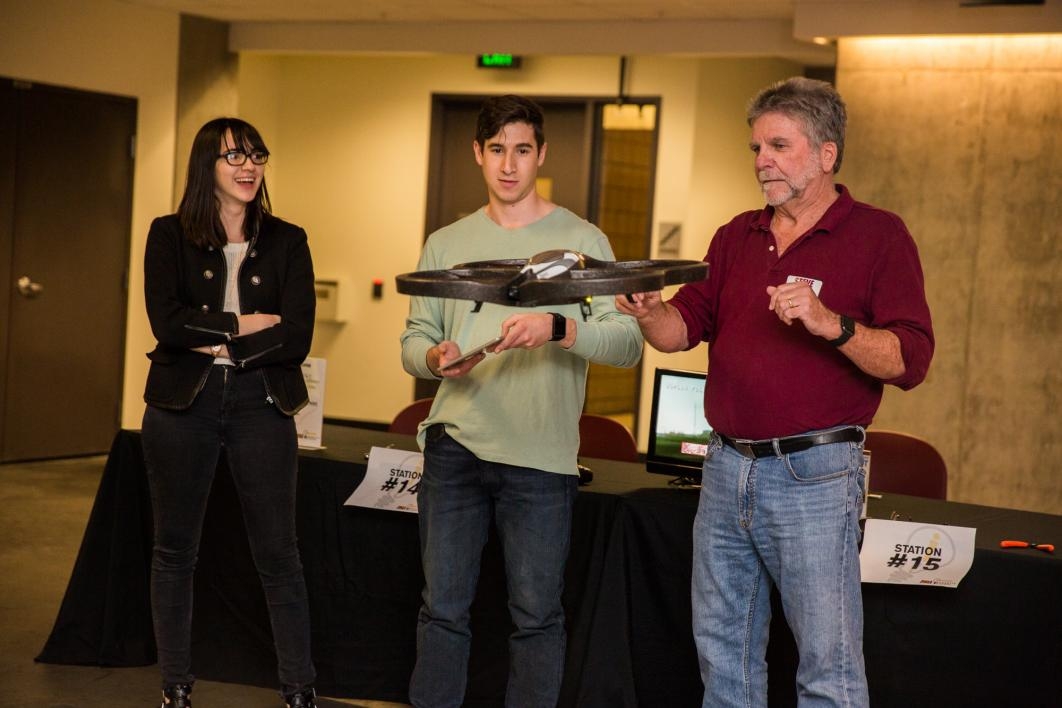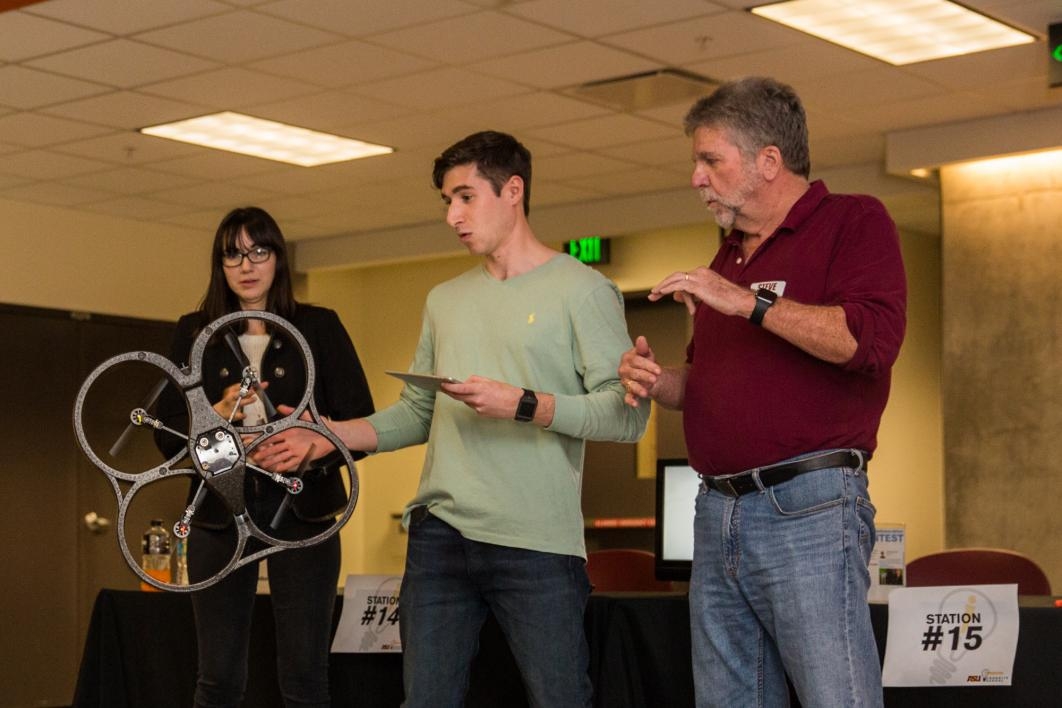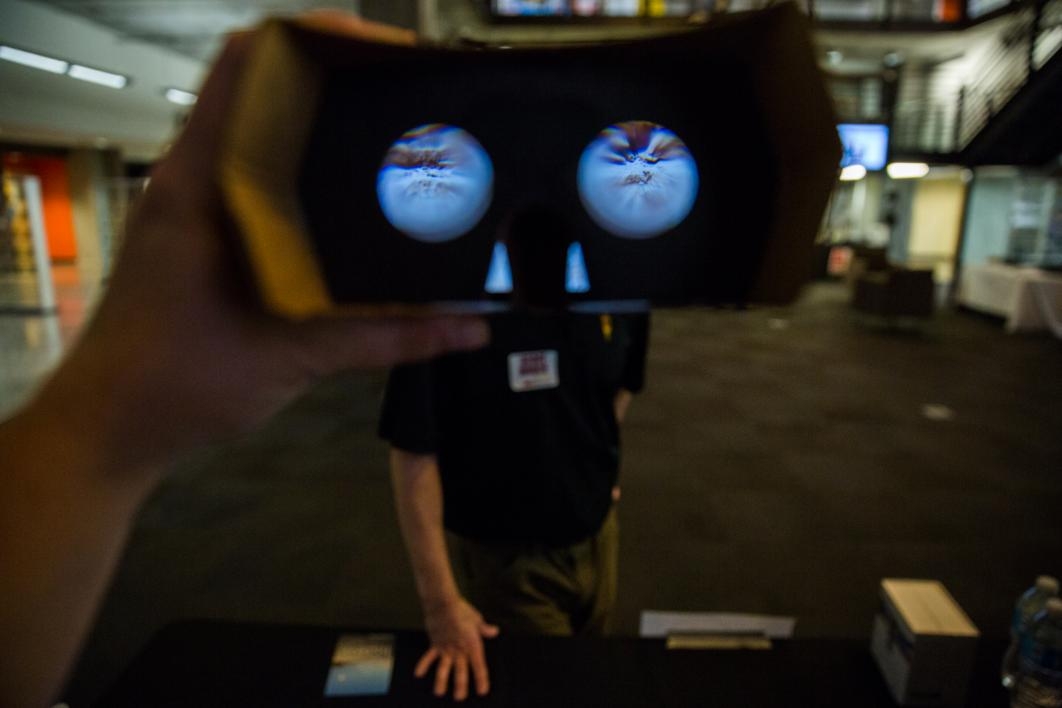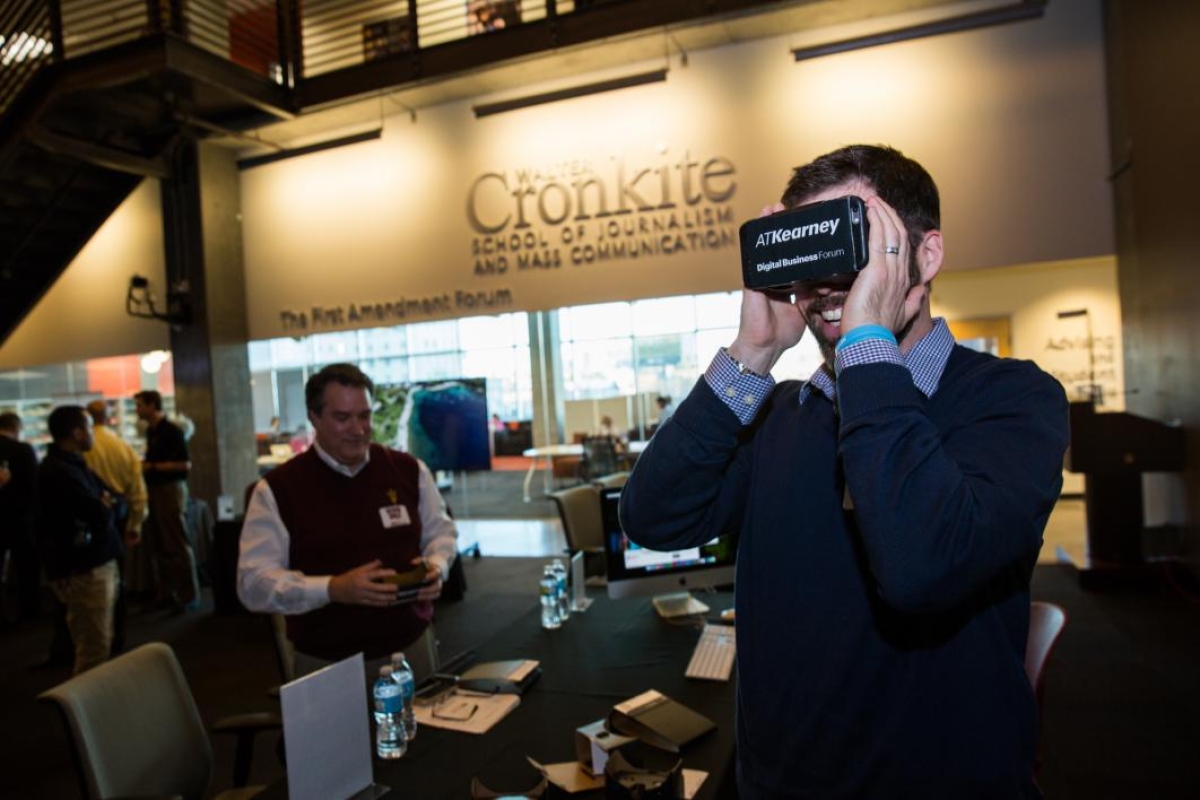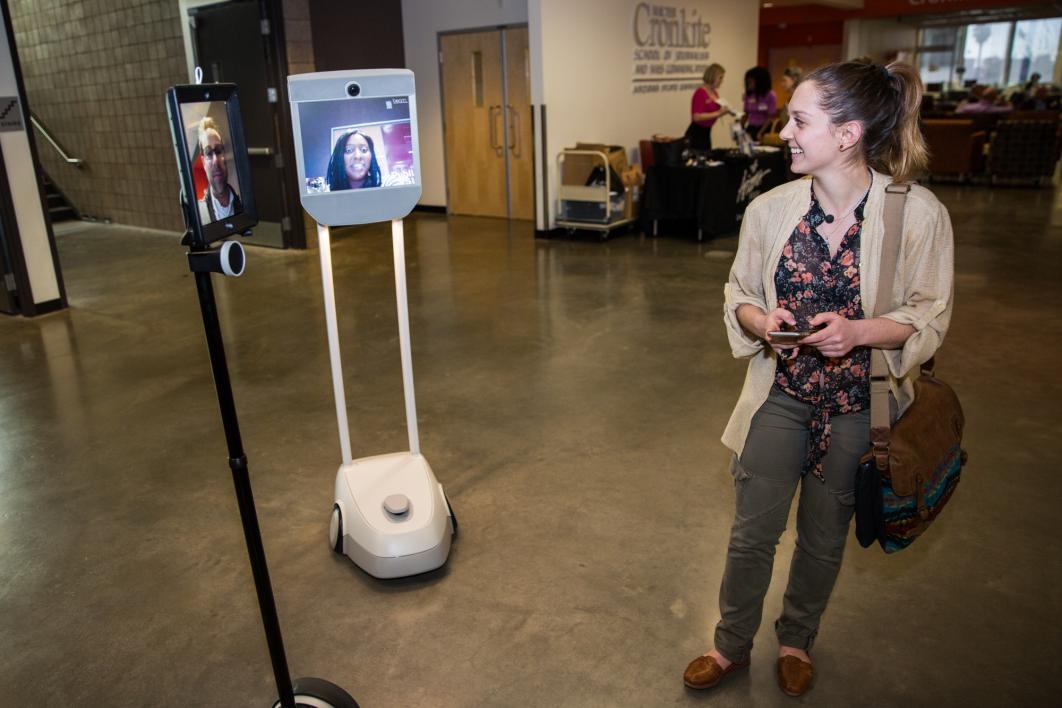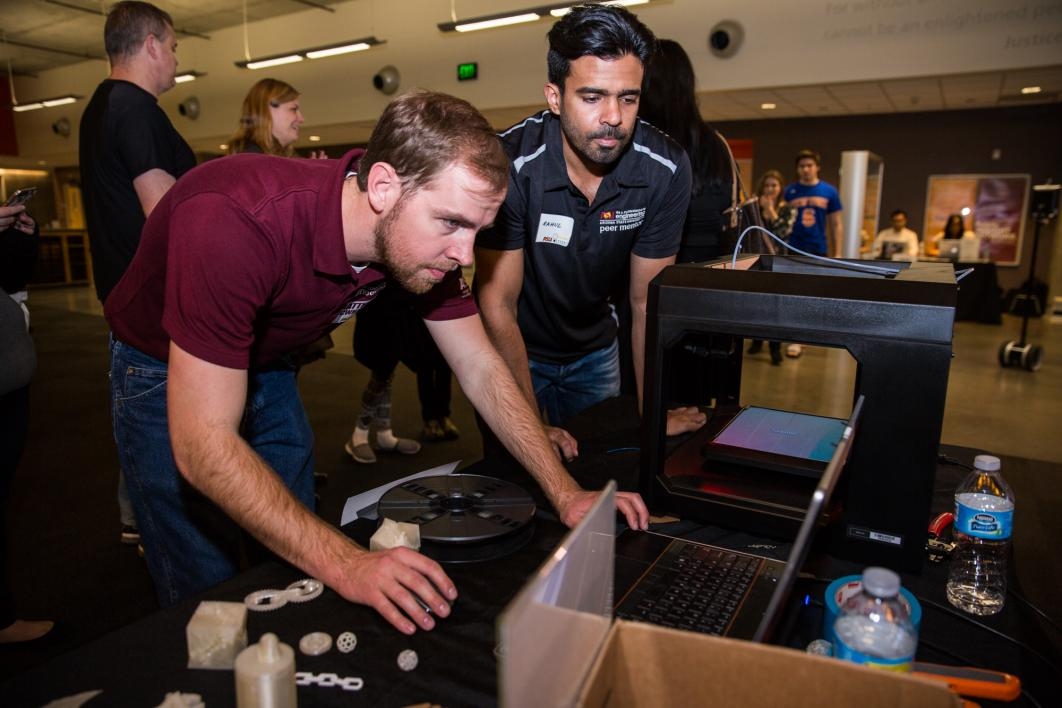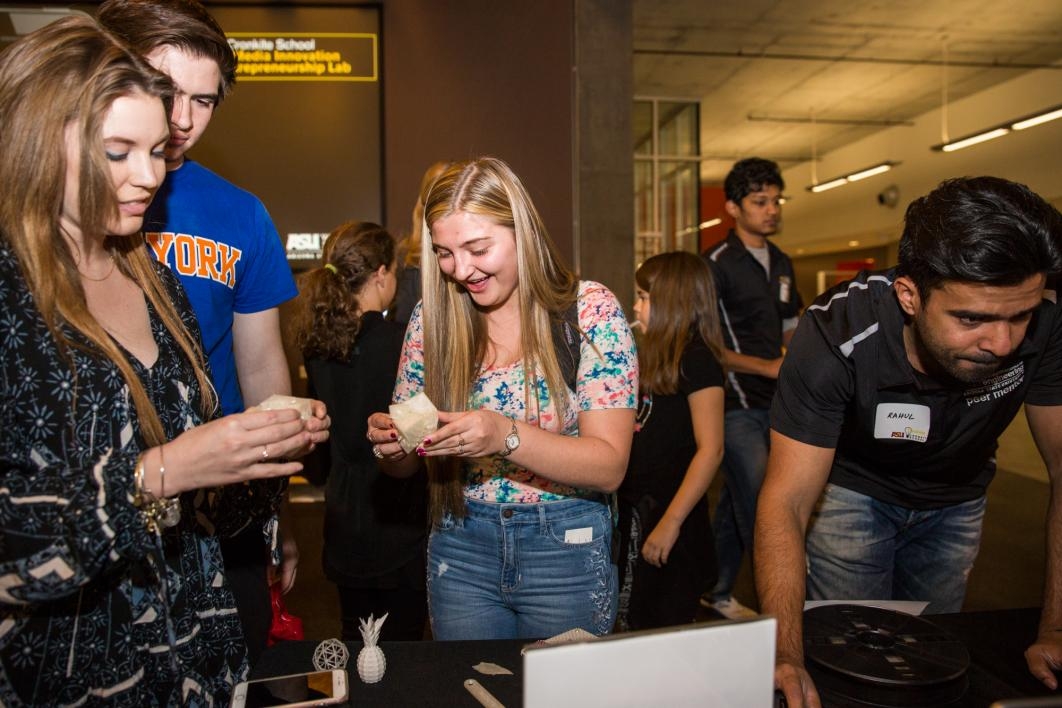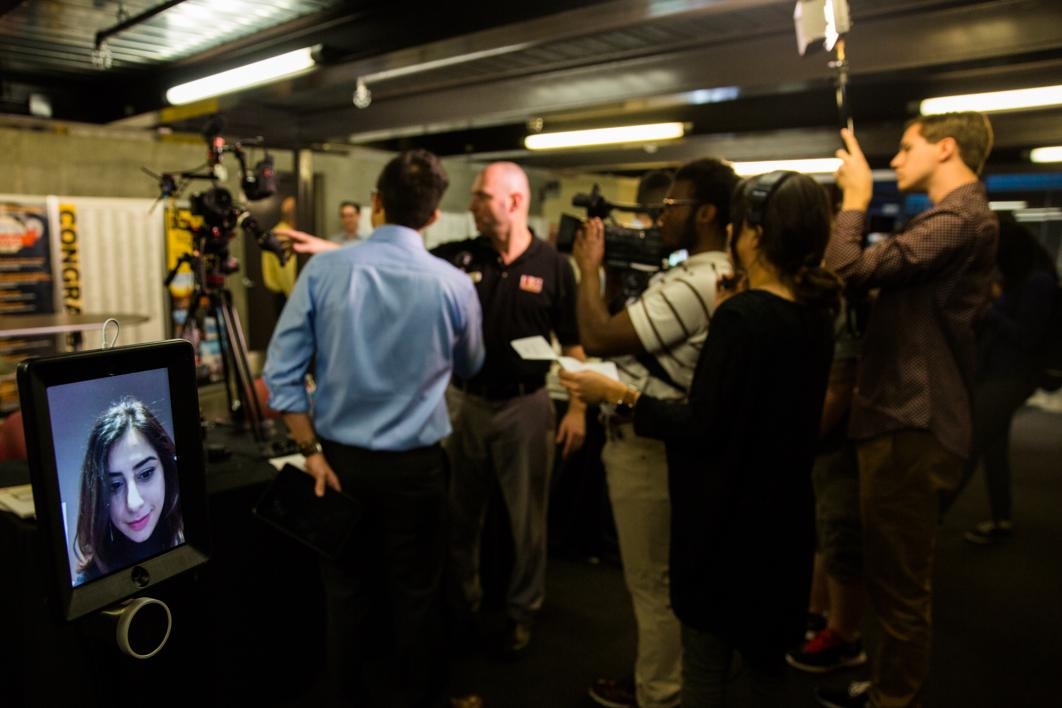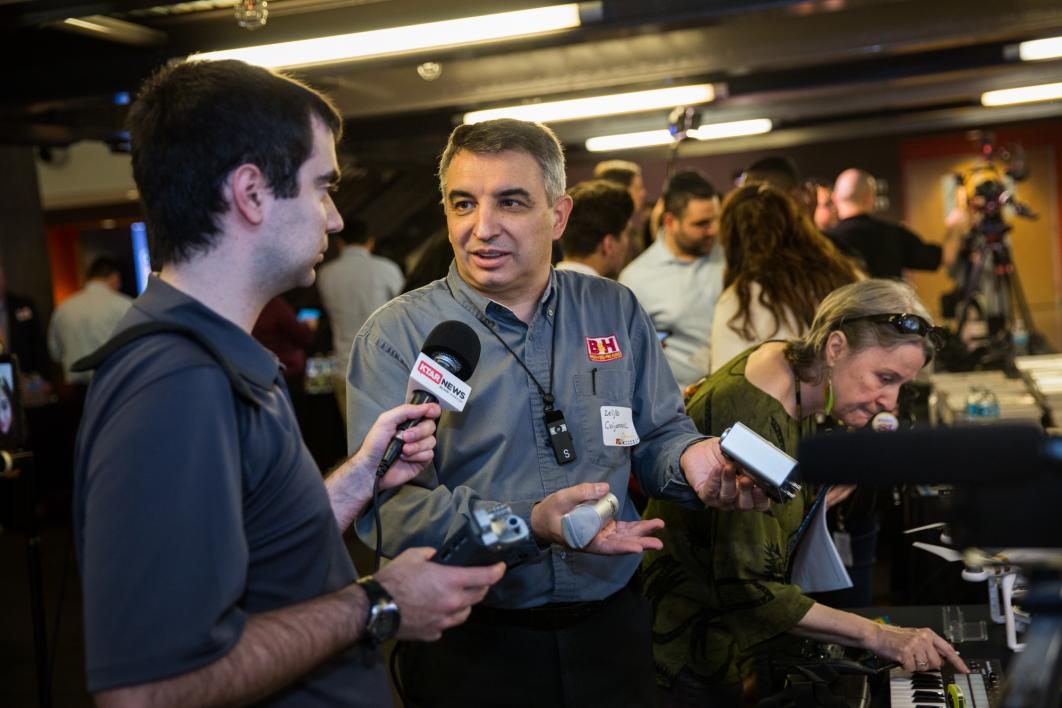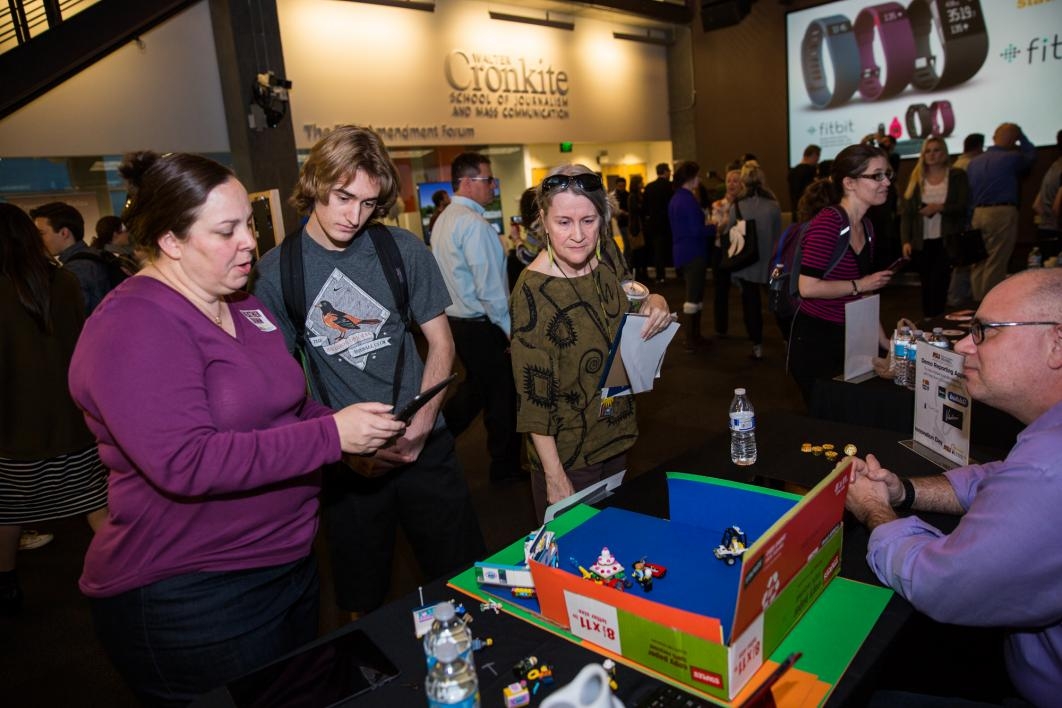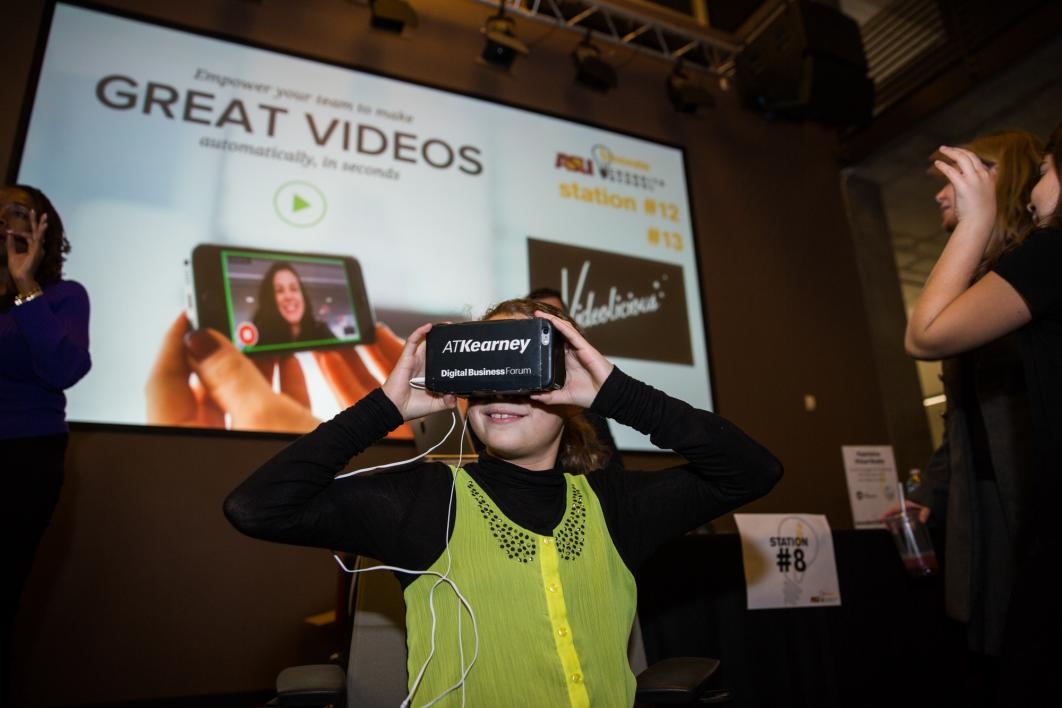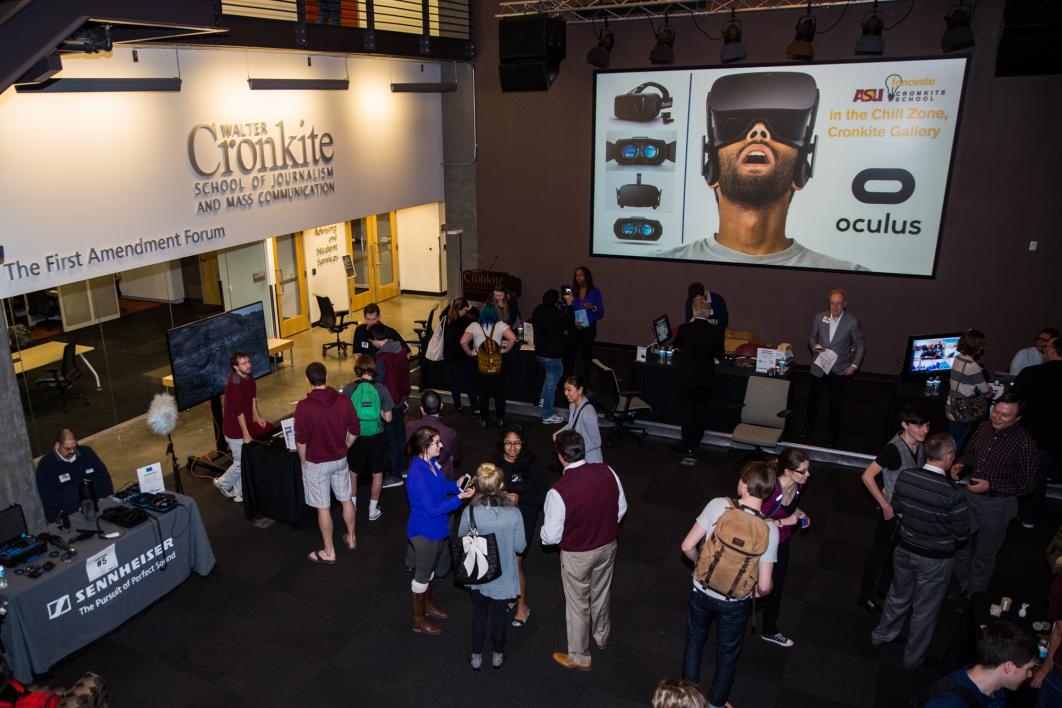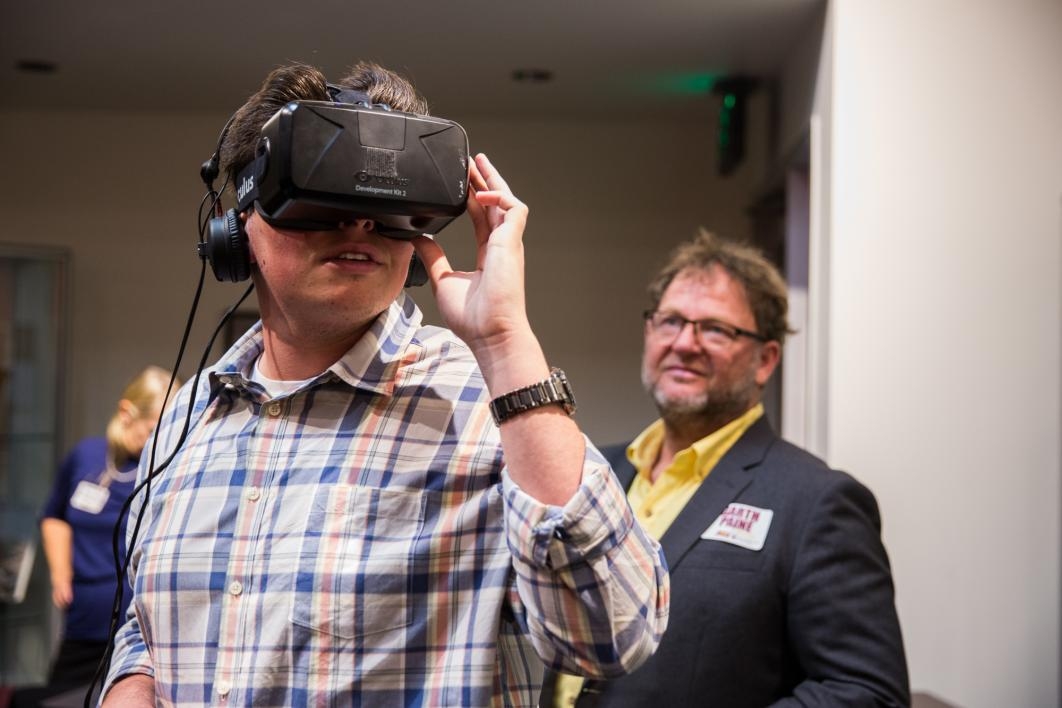The Walter Cronkite School of Journalism and Mass Communication’s First Amendment Forum was a hive of digital activity Wednesday evening.
Telepresence robots syncing people from outside the room roamed the space, people were enjoying virtual-reality experiences through their smartphones and attendees were downloading new apps.
But the room wasn’t filled with software developers gathered at a tech expo; rather they were journalism students who saw the future and embraced it.
“Journalism today is about the power of the visual image and experiencing the world around you,” said Scotty Bara, a 21-year-old junior at the Cronkite School, who was holding up a small juice-glass-size 360-degree camera up into the light to check its capability and range. “It’s a stepping-stone for storytelling, and these experiences are going to shape the way we view news.”
Just as the digital era radically changed news content with the rise of high-speed Internet and mobile technology, the Cronkite School used its first-ever Innovation Day to demonstrate how the next wave of technology will impact the future of news coverage.
Retha Hill, who heads up Cronkite’s New Media Innovation Lab and who is the former executive producer for special products at WashingtonPost.com, headed up the first wave of digital products for the newspaper industry in the mid-1990s. On Wednesday she introduced students to Vrse, a specialized and focused production studio that supports virtual-reality spherical filmmaking from a variety of sources, including the New York Times, Vice News, “Saturday Night Live” and the United Nations. Picture a video story that allows the user to look all around, including up, down and behind, to fully explore a story.
Hill said Cronkite is developing an app similar to Vrse that will use a variety of emerging technologies, including a 360-degree camera, still photography, Google maps and virtual reality.
“Five years from now people will turn their entertainment rooms, that were once filled with large-screen TVs and electronics, into immersive media rooms where they can have virtual experiences and say, ‘Take me to Tahiti!’ ” Hill said.
Geoffrey Bruce, chief exploration software architect in ASU’s School of Earth and Space Exploration, wasn’t transporting students to Tahiti, but he was taking them on virtual fields trips to the Grand Canyon, Panama and Australia by way of his DJI drone and 4k camera. Bruce said his school is using the technology to teach geology students by taking them to hard-to-reach places. He also sees the possibilities in journalism.
“Let’s say a volcano erupts and you want to cover a story without putting anyone in danger,” Bruce said. “This drone is the best and most efficient way to do that.”
Nic Lindh, institution technology analyst for Cronkite, told students about new apps for reporters such as Bubbli, which gives smartphones 360-degree capability; Seene, which allows for tablets to have 3-D images; and TouchCast, which gives broadcasts pop-up graphics.
“The whole idea behind these apps is to put editing tools in their pockets with an eye to speed and quality,” Lindh said. “These new capabilities lead to all kinds of possibilities.
Hill said new technology combined with the fearless attitude of today’s students and adaptability translates into compelling news content and better employment opportunities.
“Students are either comfortable with technology right away or they’ll say, ‘Take me out of my comfort zone and make me learn this.’ My job is to make them feel safe about using it,” Hill said. “Students who master these technologies will be the first in the newsroom to have a job — and that’s been one of my biggest selling points.”
More Law, journalism and politics
Can elections results be counted quickly yet reliably?
Election results that are released as quickly as the public demands but are reliable enough to earn wide acceptance may not always be possible.At least that's what a bipartisan panel of elections…
Spring break trip to Hawaiʻi provides insight into Indigenous law
A group of Arizona State University law students spent a week in Hawaiʻi for spring break. And while they did take in some of the sites, sounds and tastes of the tropical destination, the trip…

LA journalists and officials gather to connect and salute fire coverage
Recognition of Los Angeles-area media coverage of the region’s January wildfires was the primary message as hundreds gathered at ASU California Center Broadway for an annual convening of journalists…



